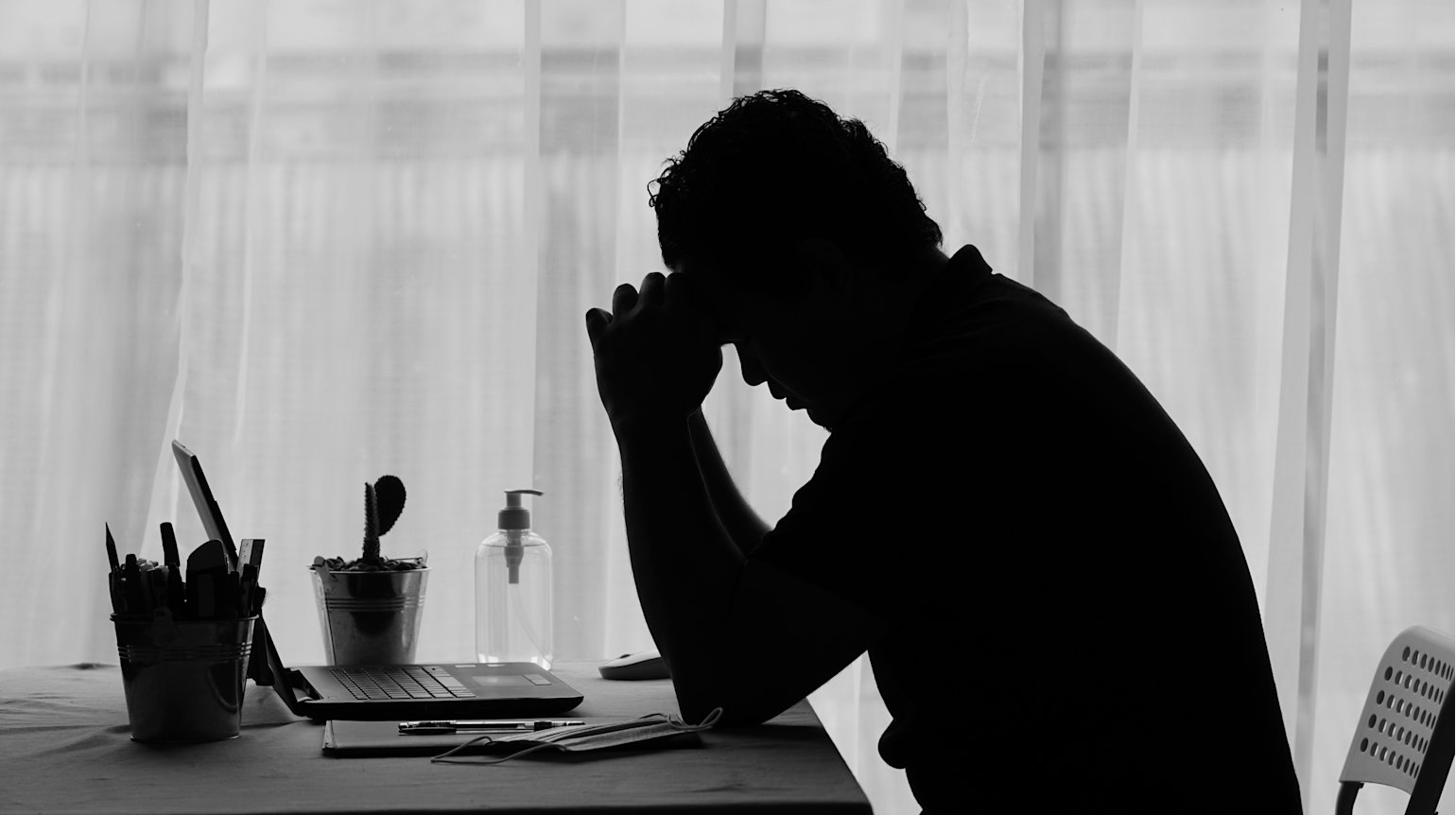Coronavirus (COVID-19) Updates
For the latest COVID-19 information and updates from Qatar Foundation, please visit our Statements page

Children react to traumas differently depending on their personality characteristics, the extent of exposure, personal loss, and the amount of support available. Image source: Halfpoint, via Shutterstock
Dr. Ahsan Nazeer Division Chief of Child and Adolescent Mental Health at QF’s Sidra Medicine, shed light on ways to support children amid the ongoing pandemic
In modern history and our children's lifetime, nothing has affected the entire human race so broadly and so brutally than the outbreak of COVID-19 that started when the first case was identified in December 2019 in Wuhan, China.
Since then, millions of people have lost their lives to this disease. By any measure, these are unprecedented numbers and have resulted in massive lockdowns across the world and unparalleled disruptions in the day-to-day functioning of children and families.
Decades of research have noted that, in the immediate aftermath of large-scale disasters, a person’s physical and socio-economic wellbeing is affected; however, the mental health consequences persist over a long period and usually go unnoticed, as there is no universal way by which governments can measure the emotional suffering of their population on a broader scale.

Dr. Ahsan Nazeer, Division Chief of Child and Adolescent Mental Health at Sidra Medicine.
This discrepancy in socio-economic vs. emotional impact data-gathering, and a focus on physical domains, becomes more evident in countries with a lack of a trained mental health workforce. Stigmatization, low literacy rates, lack of awareness, and limited understanding of the need for adequate mental health among their child and adolescent population is also another contributing factor.
Learning from the experiences of the influenza pandemic of 1918, the Asian flu pandemic of 1957, SARS of 2003, and the pandemic influenza (pH1N1) of 2009, where closing schools disrupted the transmission of the virus by 40-90%, authorities again recommended school closures and ban on public gatherings.
Exactly a year ago, 1.6 billion students and 100 million teachers in more than 190 countries remained out of school, creating the most severe educational disruption in the 21st century.
According to UNESCO data, at the peak of the pandemic exactly a year ago, 1.6 billion students and 100 million teachers in more than 190 countries remained out of school, creating the most severe educational disruption in the 21st century.
Indeed, as before, school closures did halt the spread of the virus and kept children and their families safe. However, extended school closures also caused financial hardships for communities, disrupting the routines, social interactions, and educational development of millions of children and adolescents.
UNESCO also estimated that with two-thirds of the academic year lost in 2020, 100 million children would fall below the minimum proficiency level in reading, while 24 million will be at risk of dropping out of school altogether.

Mental health consequences of pandemics usually go unnoticed, as there is no universal way by which governments can measure the emotional suffering of societies. Image source: Izlan Somai Photography, via Shutterstock
In low middle-income countries, challenges with national education budgets, disparity in education, inequality in access to technology, the digital divide, and scarce resources have further jeopardized the futures of their students According to a UNESCO report on global broadband access, half of the world’s population, which includes about 500 million students, does not have internet access. This effectively rules out any access to remote learning, which has been the predominant mode of learning in middle to high-income countries.
This pandemic has created a collective emotional, financial, and physical suffering that has surpassed the coping ability of the majority of the world’s youth.
Unlike other disasters, COVID-19 has affected the socio-emotional wellbeing, sense of security, and social relationships of children and families, but not the existing infrastructure of the communities. Instead, this pandemic has created a collective emotional, financial, and physical suffering that has surpassed the coping ability of the majority of the world’s youth.
It is also important to note that not all children are affected the same way, because of resilience in the face of trauma. A child's reaction to trauma depends upon their personality characteristics, the extent of exposure, personal loss because of trauma, and the amount of support available.
The presence of an empathetic, caring, and positive parent who can support a child during adverse experiences is the single most important protective factor in developing resiliency in the face of adversity.
From the extensive research on man-made and natural disasters of the past, we know that the effects on mental health last for a long time and include increased stress, anxiety, hopelessness, irritability, depression, substance use, feeling of a lack of control over one's life, grief, family conflicts, domestic abuse, and spousal violence. The presence of an empathetic, caring, and positive parent who can support a child during adverse experiences is the single most important protective factor in developing resiliency in the face of adversity.
To counter the current stressors and prevent long-term harm, schools need to keep communication lines open and find creative ways to build and maintain social connections among classmates. Students with pre-existing mental health issues, including depression, neurodevelopmental disabilities, and history of loneliness, despair, and isolation, should be prioritized.
Encouraging children and young people to be strong is essential, but it is more important to listen to their feelings.
Most families initially seek help from primary care physicians who can provide anticipatory guidance for trauma-related emotions. During those visits, it is important to observe any signs of domestic violence. A sense of safety and connectedness is vital to create. Parents need to be supportive while continuing to set appropriate boundaries on children's behaviors.
It is important to be mindful of behaviors at home while also understanding that some behaviors can be a normal response to stress. Encouraging children and young people to be strong is essential, but it is more important to listen to their feelings. Validate them, and allow them to grieve the loss of their routines and livelihood, while at the same time modeling healthy coping behaviors.
Elizabeth Kübler-Ross, a Swiss-American psychiatrist, once said: "The most beautiful people I've known are those who have known trials, have known struggles, have known loss, and have found their way out of the depths." We, including children and youth will, also, get out of this; stronger, and more resilient.

